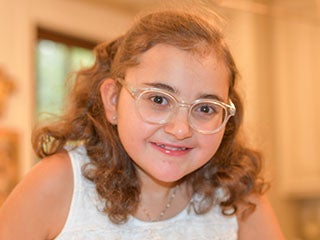Rett Syndrome
 Rett Syndrome (RTT) is a neurological disorder seen almost exclusively in females. The prevalence of RTT in females is approximately one in every 10,000-23,000 individuals and is found in all racial and ethnic groups worldwide. It is known that RTT can occur in males but is extremely rare. Recurrence in families is also extremely rare. In these families, males may have a very different pattern, including miscarriage, stillbirth, early death due to fatal encephalopathy, or other neurodevelopmental abnormalities.
Rett Syndrome (RTT) is a neurological disorder seen almost exclusively in females. The prevalence of RTT in females is approximately one in every 10,000-23,000 individuals and is found in all racial and ethnic groups worldwide. It is known that RTT can occur in males but is extremely rare. Recurrence in families is also extremely rare. In these families, males may have a very different pattern, including miscarriage, stillbirth, early death due to fatal encephalopathy, or other neurodevelopmental abnormalities.
RTT has its clinical onset in most females between 6-18 months of age. Development to that time appears normal. This is followed by a period of stagnation or regression during which the child begins losing communication skills and purposeful use of the hands. Afterwards, stereotypical hand movements (such as hand wringing or knitting motions), gait disturbances, and a slowed rate of head growth may be observed.
In 1999, a decade-long search for the genetic basis for RTT succeeded in identifying mutations in the MECP2 gene in girls fulfilling the criteria for RTT. This discovery allows confirmation of clinical diagnoses and the development of genotype-phenotype correlations. We are now examining the molecular genetics of children who do not meet all diagnostic criteria for RTT, but who are near the border zones of clinical involvement. At the present time, more than 97% of females fulfilling the criteria for RTT have mutations in MECP2. The remainder either has mutations in as-yet unexplored regions of MECP2 or is explained by alternative genes.
Predicting the severity of RTT for an individual is difficult because more than 200 mutations in the MECP2 gene have been observed. The range of these mutations result in varying degrees of neurological and physical complications and may also lead to misdiagnosis by health professionals who may not be familiar with RTT. It is often misdiagnosed as autism, cerebral palsy or other forms of developmental delay. Correct diagnosis is essential to receiving quality treatment. It is strongly suggested to parents that a diagnosis should be obtained through a clinical evaluation using agreed upon clinical criteria and clinical severity scales.
Most researchers now agree that RTT is a developmental disorder rather than a progressive, degenerative disorder as once thought. Survival into adulthood is now expected barring other illnesses or serious physical complications. Girls and women with RTT can be expected to demonstrate a full range of emotions and enjoy satisfying social, recreational, and educational experiences at home and in the community.
Beginning in 2005, The RTT clinic began an NIH/NICHD-funded Natural History Study involving evaluation of individuals with RTT, the MECP2 Duplication Disorder (MDD), CDKL5 Deficiency Disorder (CDD), and FOXG1 Disorder (FD). These last two were recognized as RTT variants in the 1980’s, but only linked to the specific genes after 2000. As such, these disorders now have their own specific designations.
In 2016, the RTT clinic was designated as a Rett Syndrome Clinical Center of Excellence by the International Rett Syndrome Foundation (IRSF) and member of the Rett Consortium for Rett Syndrome, MECP2 Duplication and related disorders.
In 2021, the RTT clinic was moved to Children’s of Alabama in order to provide more comprehensive services.
UAB Rett Syndrome Clinic Team:
Pediatric Neurologist - Alan Percy, MD
Pediatric Neurologist & Geneticist – Amitha Ananth, MD
Research Coordinator - Jane Lane, RN, BSN
Registered Dietician - Suzanne Geerts, RD, MS
For information regarding the UAB Rett Center and Rett Syndrome Clinic contact
Jane Lane, RN, BSN
(205) 638-6878




